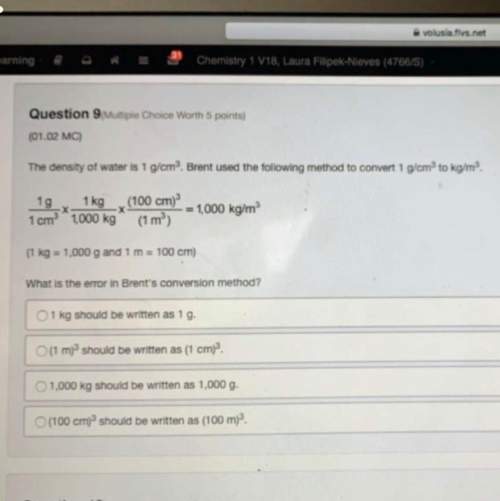
Chemistry, 10.02.2021 16:20 deannajd03
Types of Chemical Reactions
Do atoms rearrange in predictable patterns during chemical reactions?
Why?
Recognizing patterns allows us to predict future behavior. Weather experts use patterns to predict dangerous storms so people can get their families to safety. Political analysts use patterns to predict election outcomes. Similarly, chemists classify chemical equations according to their patterns to help predict products of unknown but similar chemical reactions.
Model 1 – Types of Reactions
Set A Set B 4Fe(s) + 3O2(g) → 2Fe2O3(s) MgCO3(s) → MgO(s) + CO2(g) N2(g) + 3H2(g) → 2NH3(g) 8Li2S(s) → 16Li(s) + S8(s) 2SO2(g) + O2(g) → 2SO3(g) 2H2O(l) → 2H2(g) + O2(g) MgO(s)+ H2O(l) → Mg(OH)2(aq) 2KClO3(s) → 2KCl(s) + 3O2(g) P2O5(g) + 3H2O(l) → 2H3PO4(aq) 2Na2O2(s) → 2Na2O(s) + O2(g) SO3(g) + H2O(l) → H2SO4(aq) (NH4)2CO3(s) → 2NH3(g) + H2O(l) + CO2(g)
Set C Set D 2FeCl3(aq) + 3Zn(s) → 2Fe(s) + 3ZnCl2(aq) AgNO3(aq) + NaCl(aq) → AgCl(s) + NaNO3(aq)
2Al(NO3)3(aq) + 3Ca(s) →3Ca(NO3)2(aq) + 2Al(s) 2HNO3(aq) + Mg(OH)2(aq) → Mg(NO3)2(aq) Mg (s) + CuSO4(aq) → MgSO4(aq) + Cu(s) Na2CO3(aq) + CaCl2(aq) →CaCO3(s) + 2NaCl(aq) 2Al(s) + 6HCl(aq) → 2AlCl3(aq) + 3H2(g) FeS(s) + 2HCl(aq) → H2S(g) + FeCl2(aq)
Cl2(g) + 2NaBr(aq) → 2NaCl(aq) + Br2 HCl(aq) + NaOH(aq) → H2O(l) + NaCl(aq) ZnBr2(aq) + F2(g) → ZnF2(aq) + Br2 FeBr3(aq) + K3PO4(aq) → FePO4(s) + 3KBr(aq)
1. The chemical equations in Model 1 contain the phase notations (s), (l), (g), and (aq). Match each symbol with its meaning.
dissolved in water liquid solid gas
2. Based on the examples provided, which set(s) of reactions in Model 1 typically involve ions in solution (A, B, C or D)?
3. Based on the examples provided, which set(s) of reactions in Model 1 typically involve gases and/or solids?
Types of Chemical Reactions 1
4. Match each description below to one of the reactions sets (A, B, C or D) from Model 1.
Ionic compounds dissolved in water switch partners.
One compound breaks into elements or smaller compounds.
Two or more elements or compounds combine to form one product.
Part of an ionic compound is removed and replaced by a new element.
5. Define the following terms as they are commonly used in the English language.
Synthesis—
Decomposition—
Replacement—
6. The four sets of chemical reactions shown in Model 1 have the following general names. Write the name in the appropriate place in Model 1.
Single Replacement Reaction Synthesis Reaction
Double Replacement Reaction Decomposition Reaction
7. Can two elements be used as reactants for a synthesis reactions? If yes, give at least one example from Model 1 to support your answer.
8. Can two compounds be used as reactants for a synthesis reaction? If yes, give at least one example from Model 1 to support your answer.
9. What types of substances (elements or compounds) are seen in the products of decomposition reactions? Use examples from Model 1 to support your answer.
10. In single replacement reactions, do any of the atoms change their charge? If yes, use an example from Model 1 to describe the changes that take place.
11. In double replacement reactions, do any of the atoms change their charge? If yes, use an example from Model 1 to describe the changes that take place.
2 POGIL™ Activities for High School Chemistry
12. Choose one example from the set of synthesis reactions in Model 1.
a. Write the chemical reaction in reverse.
b. Label the reaction written in part a with one of the reaction types in Model 1.
13. Identify each of the reactions below as synthesis (S), decomposition (D), single replacement (SR) or double replacement (DR).
K2O(s) + H2O(l) → 2KOH(aq)
2MgCl2(aq) + Na2CO3(aq) → 2NaCl(aq) + MgCO3(s)
2Al2O3(s) → 4Al(s) + 3O2(g)
Cu(NO3)2(aq) + Zn(s) → Cu(s) + Zn(NO3)2(aq)
H2SO4(aq) + 2NaOH(aq) → Na2SO4(aq) + 2H2O(l)
2K(s) + 2H2O(l) → 2KOH(aq) + H2(g)
2O2(g) + N2(g) → N2O4(g)
2NaF(s) → 2Na(s) + F2(g)
14. A student writes the following incorrect chemical equation for the synthesis of magnesium oxide.
Mg + O2 → MgO2

Answers: 1


Another question on Chemistry

Chemistry, 22.06.2019 00:30
In numbering carbon atoms in the parent chain of a hydrocarbon, why would you number from right to left, rather than left to right
Answers: 1

Chemistry, 22.06.2019 12:00
In a laboratory, 1.55mg of an organic compound containing carbon, hydrogen, and oxygen is burned for analysis. this combustion resulted in the formation of 1.45mg of carbon dioxide and .89 mg of water. what is the empirical formula for this compound?
Answers: 1

Chemistry, 22.06.2019 14:00
Ascientist measures the speed of sound in a monatomic gas to be 449 m/s at 20∘c. what is the molar mass of this gas?
Answers: 2

Chemistry, 23.06.2019 01:30
Will a solution form when the solvent and solute are both nonpolar? a. not likely b. never c. most likely
Answers: 1
You know the right answer?
Types of Chemical Reactions
Do atoms rearrange in predictable patterns during chemical reactions? <...
Questions

Mathematics, 27.09.2020 14:01

Chemistry, 27.09.2020 14:01

Mathematics, 27.09.2020 14:01

Mathematics, 27.09.2020 14:01

Mathematics, 27.09.2020 14:01

Biology, 27.09.2020 14:01

Mathematics, 27.09.2020 14:01


Mathematics, 27.09.2020 14:01

Mathematics, 27.09.2020 14:01




English, 27.09.2020 14:01


English, 27.09.2020 14:01

Mathematics, 27.09.2020 14:01






